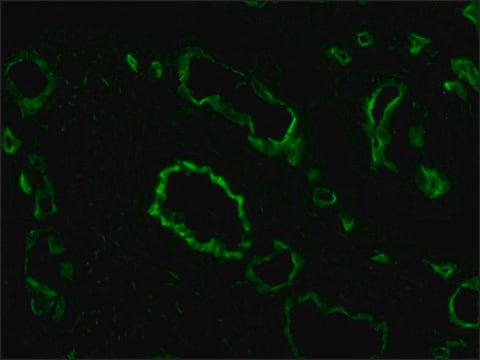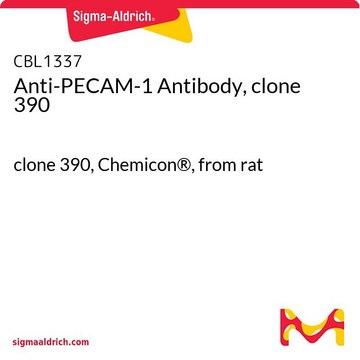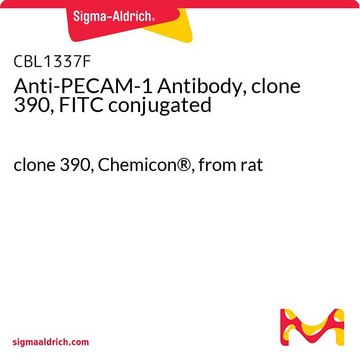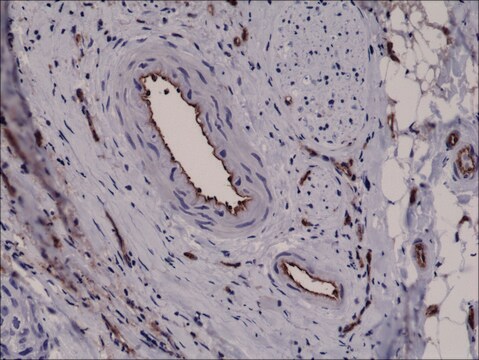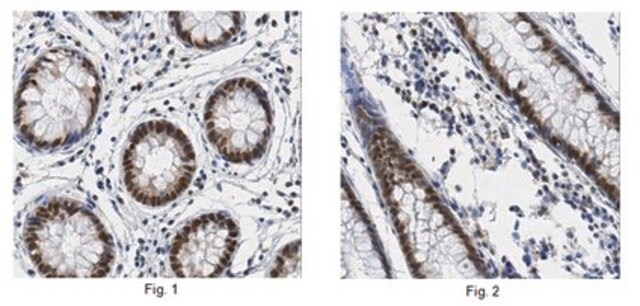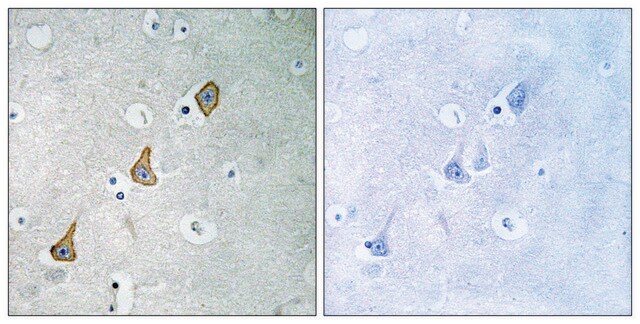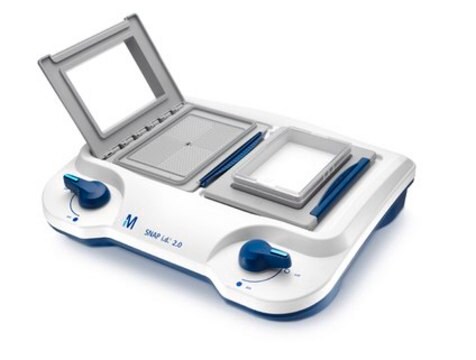CBL468
Anti-PECAM-1 Antibody, domains 3-6 of human PECAM-1, clone HC1/6
clone HC1/6, Chemicon®, from mouse
Synonyme(s) :
CD31
About This Item
Produits recommandés
Source biologique
mouse
Niveau de qualité
Forme d'anticorps
purified immunoglobulin
Clone
HC1/6, monoclonal
Espèces réactives
human
Fabricant/nom de marque
Chemicon®
Technique(s)
flow cytometry: suitable
immunohistochemistry (formalin-fixed, paraffin-embedded sections): suitable
immunoprecipitation (IP): suitable
Isotype
IgG1
Numéro d'accès NCBI
Numéro d'accès UniProt
Conditions d'expédition
wet ice
Modification post-traductionnelle de la cible
unmodified
Informations sur le gène
human ... PECAM1(5175)
Spécificité
FUSION PARTNER: P3-x63Ag8.653 myeloma cell line
Immunogène
Application
This antibody will stain frozen tissue sections
Suitable for immunoprecipitation studies
Suitable for flow cytometry either indirectly or directly when labelled with FITC or R-PE
Suitable for use on formalin fixed paraffin embedded sections after protease pre-treatment.
Optimal working dilutions must be determined by the end user.
Forme physique
Remarque sur l'analyse
Activated microglial cells
Autres remarques
Informations légales
En option
Code de la classe de stockage
10 - Combustible liquids
Classe de danger pour l'eau (WGK)
WGK 2
Point d'éclair (°F)
Not applicable
Point d'éclair (°C)
Not applicable
Certificats d'analyse (COA)
Recherchez un Certificats d'analyse (COA) en saisissant le numéro de lot du produit. Les numéros de lot figurent sur l'étiquette du produit après les mots "Lot" ou "Batch".
Déjà en possession de ce produit ?
Retrouvez la documentation relative aux produits que vous avez récemment achetés dans la Bibliothèque de documents.
Notre équipe de scientifiques dispose d'une expérience dans tous les secteurs de la recherche, notamment en sciences de la vie, science des matériaux, synthèse chimique, chromatographie, analyse et dans de nombreux autres domaines..
Contacter notre Service technique